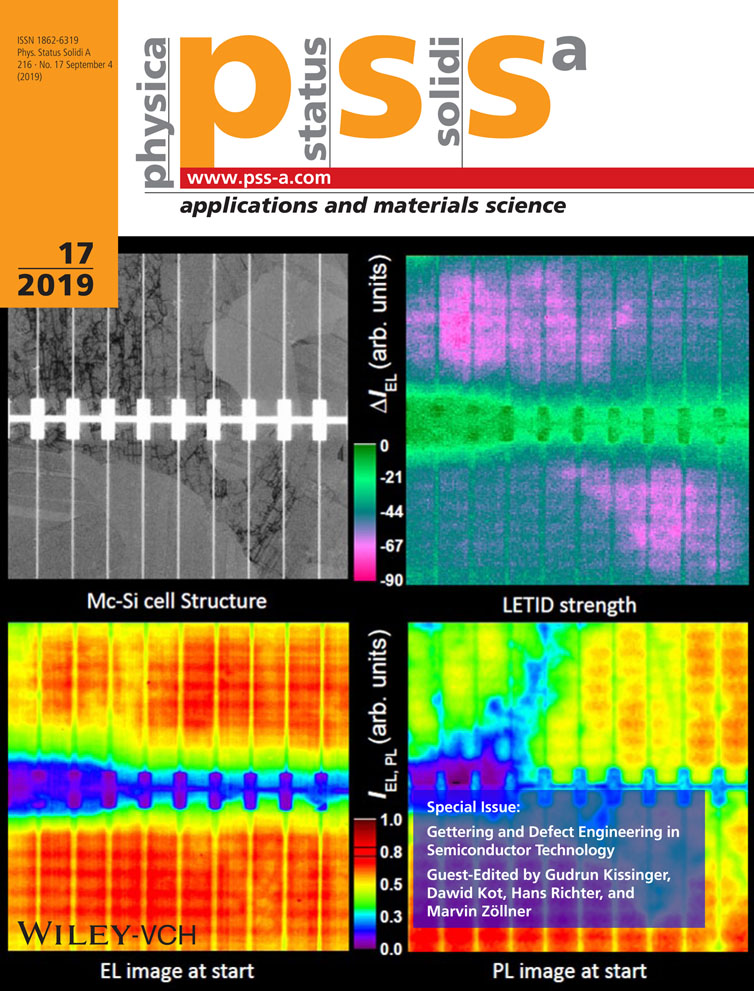Gettering Mechanism of Copper in n-Type Silicon Wafers
Abstract
The dependence of the gettering efficiency for copper impurity in n-type silicon wafers on the concentration of a dopant such as phosphorus, arsenic, or antimony is investigated by chemical analysis of the copper concentration and the observation of copper precipitates. It is found that the gettering efficiency decreases gradually with increasing dopant concentration in the range of 1014–1019 cm−3 and increases rapidly at concentrations higher than 1019 cm−3. Copper precipitates are observed in the bulk of silicon wafers doped with phosphorus in the concentration range of 1014–1019 cm−3, suggesting that the relaxation gettering of copper occurs. In contrast, no copper precipitates are observed at concentrations above 1019 cm−3. It is suggested that segregation gettering occurs as a result of the pairing reaction between copper and heavily doped phosphorus. It is concluded that the gettering mechanism of copper in n-type silicon wafers changes from relaxation gettering to segregation gettering with increasing dopant concentration.
Conflict of Interest
The authors declare no conflict of interest.




